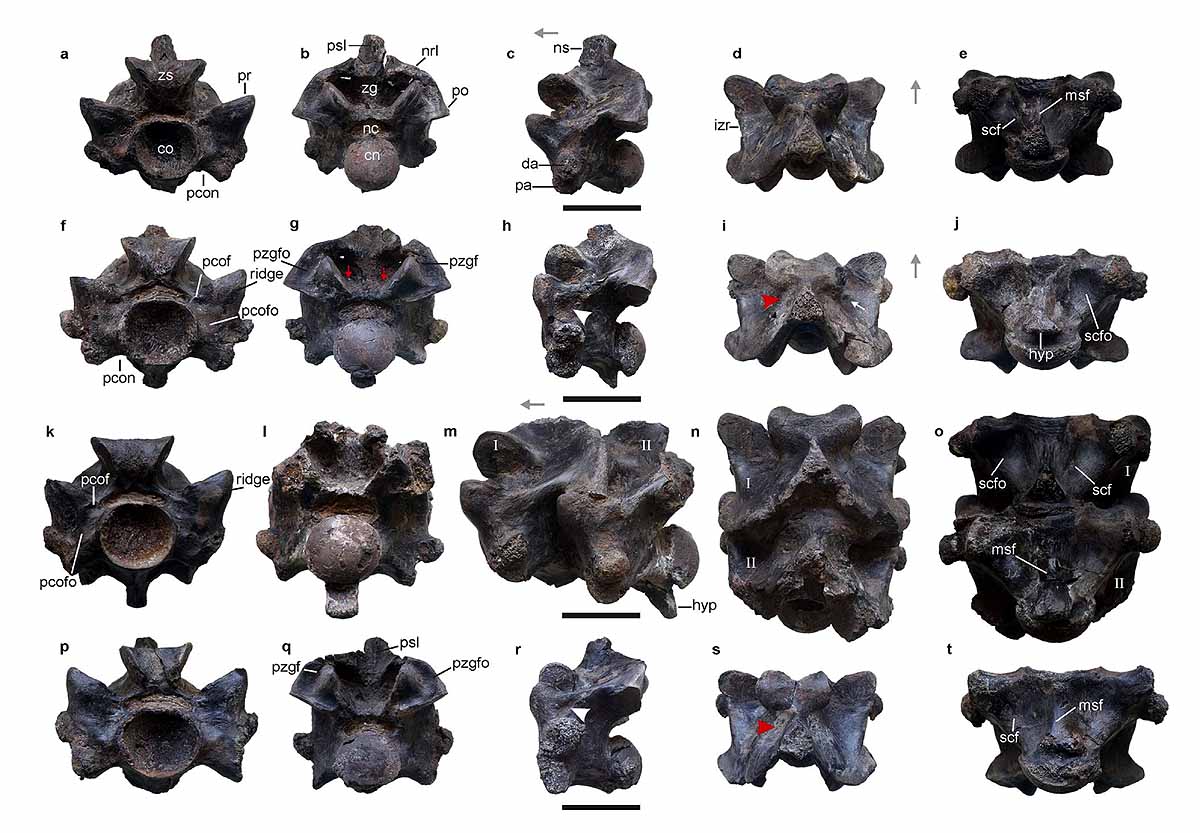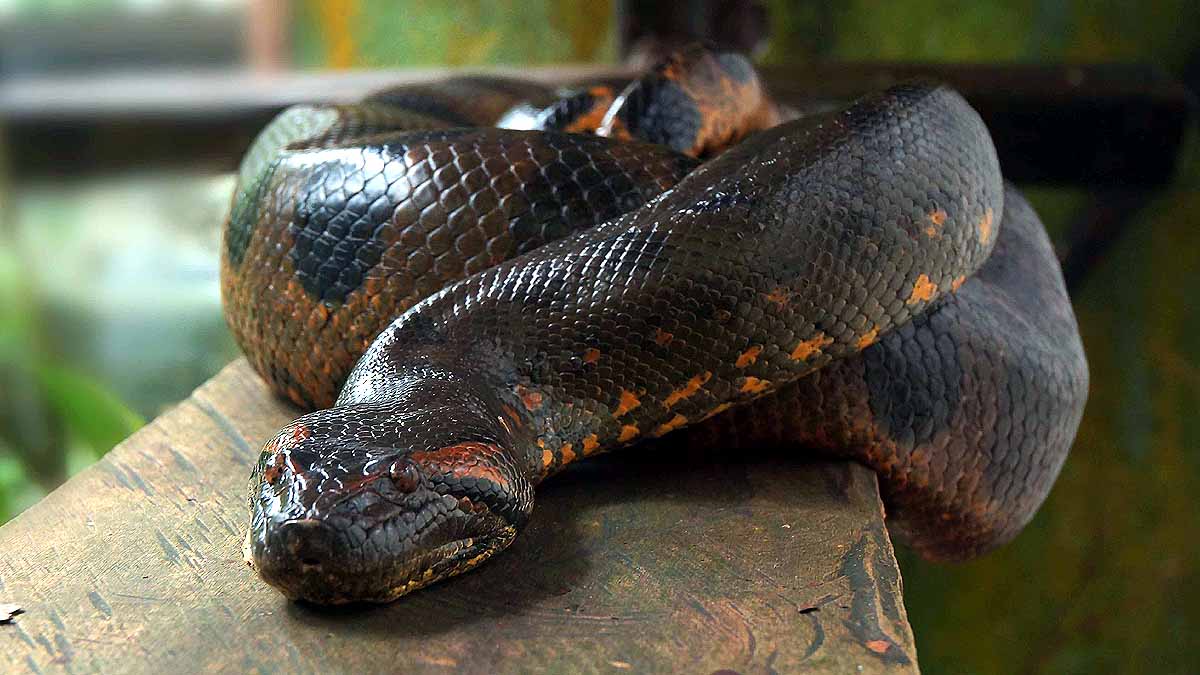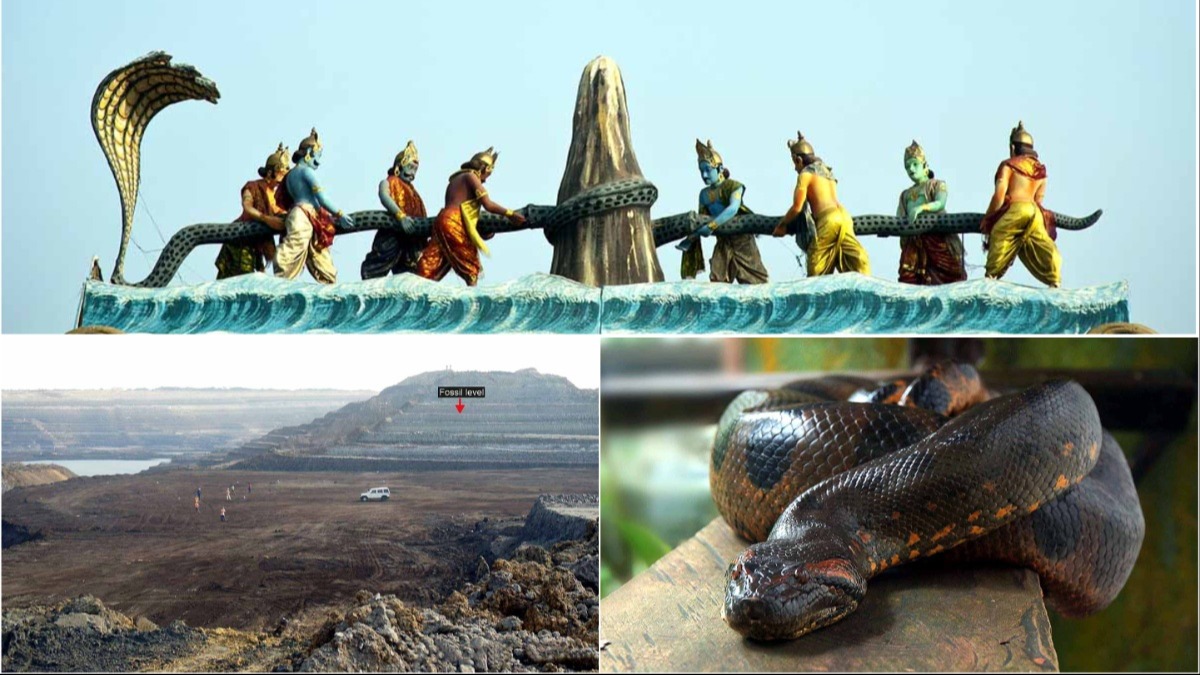In the arid landscape of Kutch, Gujarat, paleontologists have unearthed the fossil remnants of what is believed to be the Vasuki Serpent (Vasuki Naag), a colossus that reigned as the world's largest serpent. Outshadowing even the notorious anaconda and the prehistoric T. rex, the Vasuki Serpent's fossilized spine was discovered in the Panandhro Lignite mines.
This is the same serpent that legends say coiled itself around Mount Mandara, used as a churning rod to stir the cosmic ocean, revealing treasures and the elixir of life. A team of scientists uncovered 27 segments of the serpent's spine, scientifically named Vasuki Indicus.

Source: aajtak
Scientists hint that the serpent's enormous stature resembled that of modern pythons, but it was likely non-venomous. A study published in the journal
, quotes IIT Roorkee paleontologist Debjit Dutta stating the size indicates it was a Vasuki Naag, a slow-moving yet formidable predator.
Staggering size: Lengths between 36 to 49 feet, weighing up to 1000 kg
Dutta explained that, akin to anacondas and pythons, the Vasuki Naag would constrict its prey. However, as global temperatures began to rise, these giants started to disappear. It is estimated that they typically reached lengths between 36 and 49 feet, weighing close to a metric ton.

Source: aajtak
Heralded as Lord Shiva's serpent, the monarch of snakes
Venerated within Hindu mythology as the serpent of Lord Shiva, Vasuki Naag was considered the king of snakes. This prehistoric serpent contended with the likes of Titanoboa, another archaic behemoth. Titanoboa's fossils were first discovered in Colombian coal mines in 2009, measuring about 42 feet long and weighing around 1100 kilograms. They inhabited Earth approximately 58-60 million years ago.

Source: aajtak
Was it larger than Titanoboa? Continued studies seek to clarify
Professor Sunil Bajpai of IIT Roorkee, a member of the excavation team, mentioned that comparisons between the scale of Vasuki Naag and Titanoboa are viable, but differences in the vertebrae offer unique distinctions. It is still uncertain if Vasuki outranked Titanoboa in size.
Search for the skull still on, as the quest continues
The Vasuki Naag belonged to the Cenozoic era, approximately 66 million years past, after the dinosaur era had concluded. The largest found segment of its spine is over four inches wide, indicating a body dimension of at least 17 inches across. The skull of Vasuki Naag remains elusive, with the search still ongoing.

Source: aajtak
Diet of Vasuki Naag still a mystery
Scientists remain unsure of the serpent's diet, but its size suggests it could have fed on the colossal crocodiles of its era. Fossils of several crocodiles and turtles have been found nearby, along with two prehistoric whales.
The journey to Indian soil...
Vasuki Naag was related to the Madtsoiidae family of snakes, which thrived from 90 million years ago and perished around 12,000 years ago. These serpents spread from India across southern Eurasia to northern Africa. When Eurasia collided with Asia about 50 million years ago, the formation of India as we know it took place.




